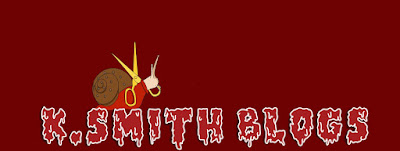[Reader disclaimer: spoilers will be discussed].
 |
| Hannibal Lecter from The Silence of the Lambs (1991) |
When it comes to horror films, there's usually one, major selling point: the antagonist. What would any franchise be without their iconic baddie? If you picture Hellraiser (1987), the first thing that should come to mind is Pinhead. Alternatively, if you were to think of the Nightmare on Elm Street or Friday the 13th series, you'd think of Krueger and Voorhees rather than the main cast.
So what makes a decent horror villain? Is it the traumatic backstories, the distinct appearance? Well, in this writer's opinion, there are four main elements to a great antagonist: a lack of motive, unique characterisation, the omittance of dialogue and facial expression.
A Lack of Motive
 |
| The Man from Hush (2016) |
What's scarier than a man set out for revenge? Well, I'd argue a man without a need for it. A lack of motive, seen in such films as Hush, The Strangers (2008) and The Purge (2013), creates an unsettling atmosphere for viewers because a villain without motive is equally a villain without conscience, and therefore someone the hero cannot be reasoned with.
Imagine yourself in the scenario of Hush: a man attempts to break into your home and kill you. Why? Because he "can" and that's it. What would you do? In this situation, one would hope to regain control and order through bargaining or, at the very least, exploit one of their weaknesses. As human beings, we fear the unknown more than anything else, so if the thing attacking us cannot be reasoned with in any logical fashion, then we are rendered completely helpless.
Villains with a motive are, in a way, able to gain our sympathy; villains without one leave you unable to find closure in the wake of their actions and vulnerable to their attacks, making them far more terrifying than the average horror baddie.
Unique Characterisation
 |
| Captain Spaulding from House of 1000 Corpses (2003) |
Every villain in horror history can easily be identified by their unique characterisation, but it takes a team of very creative costume designers and writers to make a truly great one; as aforementioned, the scariest villains can be the ones without motive, but that doesn't mean they have to lack personality or presentation.
Take Captain Spaulding, for example: a curator of the horrific and whimsical, a lover of fried chicken and a showman of curiosities. Sure, he has no motive for the murders he commits throughout the film (other than self defense and general amusement) but his dialogue and iconic appearance is what makes him thoroughly enjoyable (albeit terrifying) to watch.
We fear those without motive but we also fear those who are grandiose, unabashedly violent and forthcoming with their murderous intent. There's more room for reasoning, sure, but it's just as unlikely that you'll survive. Spaulding kills for the fun of it but that doesn't mean he's a completely emotionless psychopath: he likes to have fun with his victims, prolonging their torture, much to the horror (and delight) of us, the audience.
Omittance of Dialogue
 |
| Michael Myers from Halloween (1978) |
From Krueger's iconic taunts to Chucky's witty one-liners, we're all too accustomed to villains mouthing off during their confrontations with the good guys. So what about villains who don't speak a word? Arguably, the thing that makes Michael Myers terrifying (other than that lifeless, recycled Captain Kirk mask) is that he never speaks a word.
In Halloween, Myers' motives are unclear, mainly because we never hear him talk or vocalise his intention: we know his plans and mindset through the dialogue of others. His silence is arguably just as unnerving as not having a motive in the first place; verbalising their thoughts, no matter how self-indulgent or deluded they may be, at least gives us clues to the mindset of a villain. Our deductions are moot when it comes to Myers because the only things we know are what the protagonists know: we are truly observers in that sense, unable to predict his actions. So if you were to cross paths with him, you'd likely be cut down without reason, which is terrifying in that you'd never know when you were about to die.
Facial Expression
 |
| Art the Clown from Terrifier (2016) |
Now let's look at the other end of the Michael Myers spectrum, from a blank expression to a pantomime-esque one.
I'm biased here but I find Art the Clown to be one of the best modern horror villains, simply for his facial expressions. Like Myers, Art lacks the ability to talk, but the biggest difference is that what he lacks for in dialogue, he certainly makes up for in his gruesome smile and widened eyes.
Art's facial expressions, akin to that of Gwynplaine in The Man Who Laughs (1928), unsettles us due to the connotations: a smile would suggest happiness or joy, a terrifying concept when placed in the context of the villain sawing a woman medieval-style from groin to head. On the flip-side of that, Art's cold, calculated stare (as seen in the pizzeria scene) is just as scary, especially when he switches back and forth between the two expressions in a seemingly effortless fashion.
This, coupled with Art's love of the tricycle and theatrical fun with body parts, makes him seem almost child-like, which arguably lulls you into a false sense of security. Art seems like he could be reasoned with because he presents himself as infantile at times, or naïve and vulnerable, but the truth is that he kills for fun and we know that simply through the sheer delight on his face.
- K

No comments:
Post a Comment